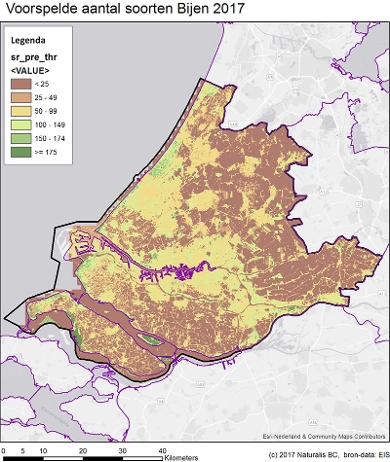
What we can learn from hi-tech nature
Biodiversity in the Netherlands is having a tough time. Professor of Natural Capital Koos Biesmeijer combines research with practical advice: from the greening of industrial parks to solutions inspired by hi-tech nature. Inaugural lecture 9 March.
What is the most important message to take away from your lecture?
‘For our future it is crucial that the whole of society realises that nature is a partner and not an enemy. My research is about the relationship between natural capital and human activities. Obviously, there are two types of natural capital: on the one hand the type that is not living and that may be available only in limited quantities, such as oil and gas, and that is sometimes renewable, such as wind or water. As well as these types, there are also living resources like plants, animals, fungi, bacteria and ecosystems. This living nature is only renewable if we treat it with respect. We can learn so much from nature because it is so hi-tech: millions of years of evolution have produced all kinds of clever solutions. Just think of particular plants that are able to filter polluted water; we can use them to create purification marshes.'

What else are you researching?
‘Nature is, of course, absolutely invaluable, but it is still good to express some ecoservices - such as pollination and filtration of water and light - in monetary terms so that their economic value becomes clearer. That's one of the things I have been doing in the past few years. If we add up the contribution of pollinators such as bees over all the different crops throughout the world, we come to a sum of between 230 and 570 billion euros a year. Not only that, pollination by a diverse range of species - bees and hoverflies, for example - produces the best apples and pears. That's why a wide diversity of animals and plants is so incredibly important, if only for our food supplies.'
What is the state of biodiversity in the Netherlands?
‘In the 1970s and 1980s, biodiversity really suffered in the Netherlands. This sharp decline seems to have halted, but the overal level is structurally poor. There are too many competing activities in a small area and the land is used too intensively. My advice to local authorities and the business sector is to design multifunctional landscapes. Colleagues and I have produced a biodiversity map of South Holland showing where - in places from dunes to industrial parks - nature can be given a helping hand. Laying out corridors for animals and sowing plants can increase diversity because different plants attract a more diverse range of insects. And this greening of the environment also has all kinds of other positive consequences. People who work on industrial parks, for example, are more likely to take a walk outside in their breaks if they are surrounded by greenery.'

You were one of the developers of the 'the Netherlands hums' citizen science project. How can the public help?
‘Of the 360 species of bees in the Netherlands, there are now barely 100 species left and around half of these are under threat. In the weekend of 20 and 21 April we are holding our first bee-counting in the Netherlands, because that's when bees appear in our gardens again. We've designed an app and a questionnaire so everyone can help. If a lot of people take part, we'll get a much more realistic picture than if we do the counting just with a limited group of researchers.'
